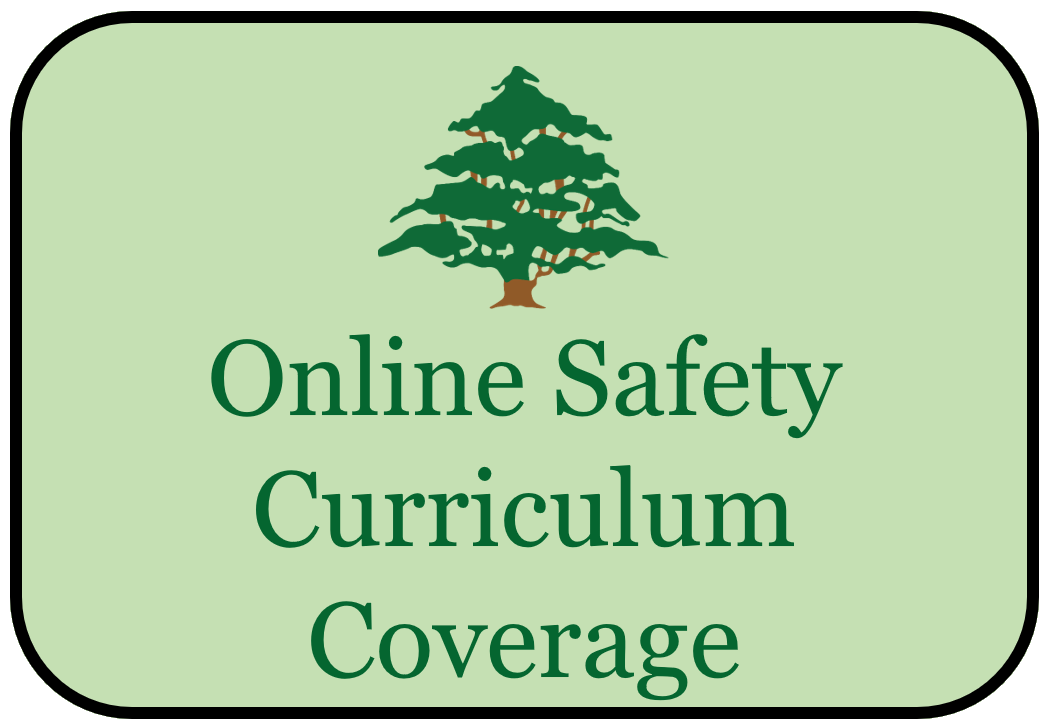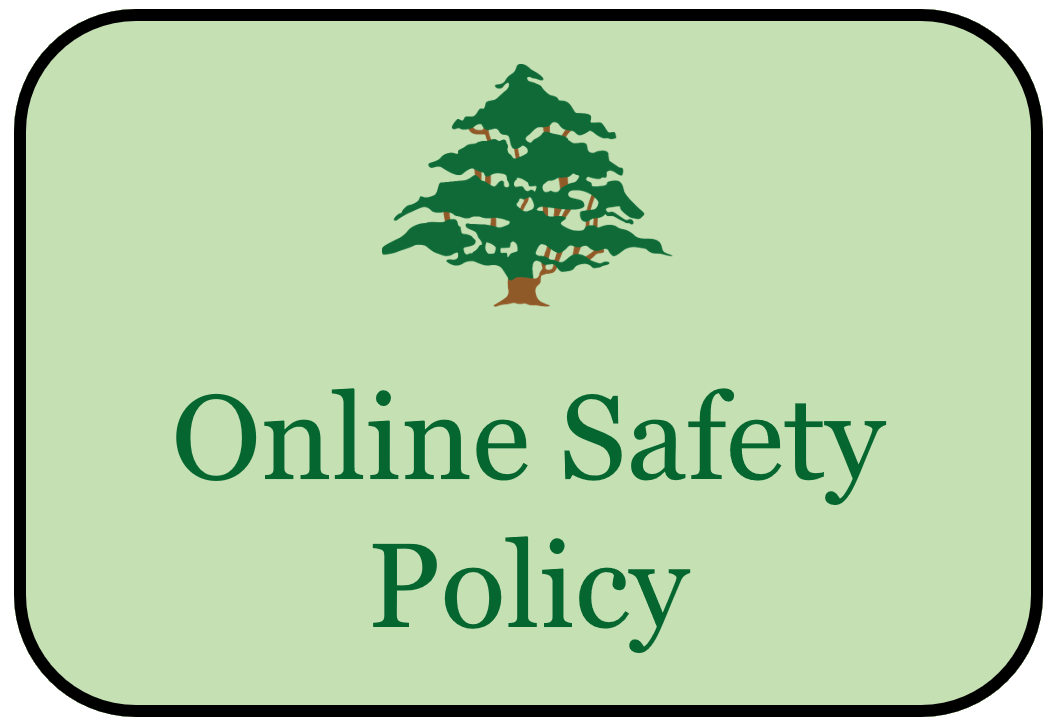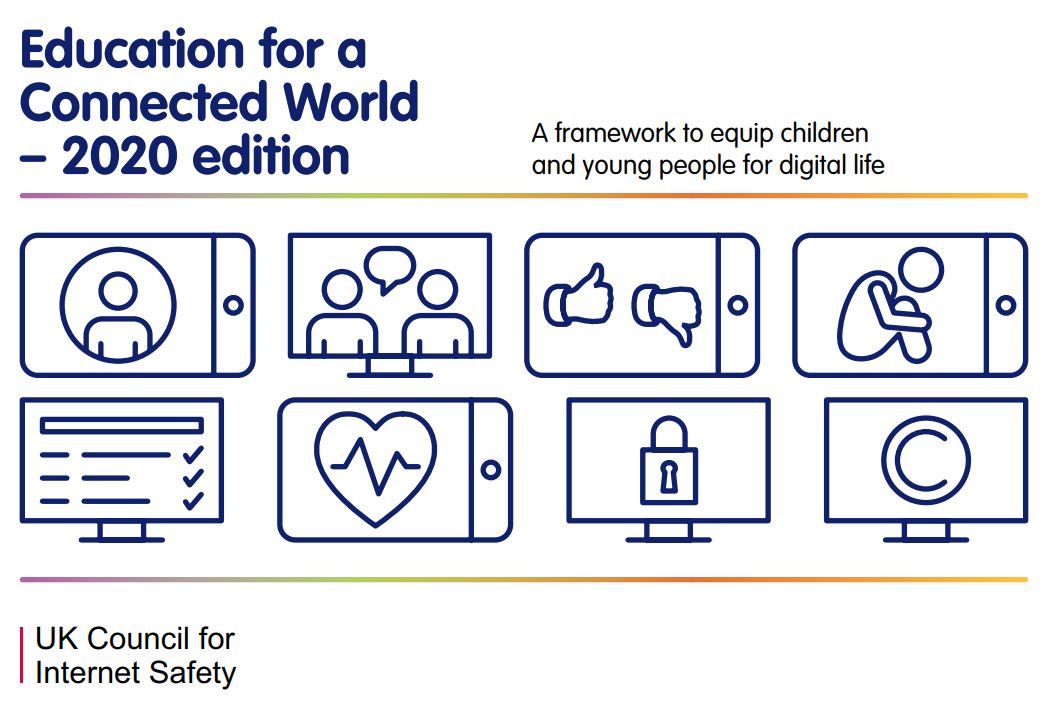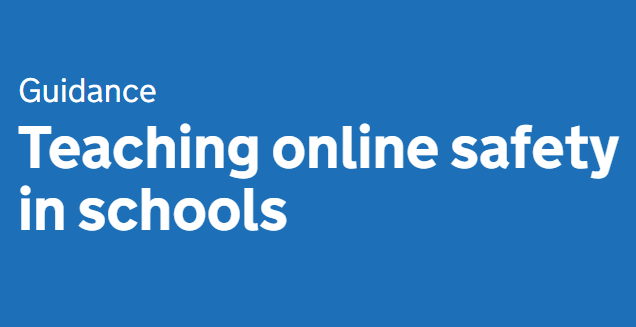At Stocksbridge Junior School, every child is a safe and responsible digital citizen.
We recognise that today’s pupils are growing up in an increasingly complex world, living their lives seamlessly on and offline. This presents many positive and exciting opportunities, but also challenges and risks. At Stocksbridge Junior School, we want to equip our pupils with the knowledge needed to make the best use of the internet and technology in a safe, considered and respectful way, so they are able to reap the benefits of the online world.
Intent
Children have the right to enjoy childhood online, to access safe online spaces, and to benefit from all the opportunities that a connected world can bring to them, appropriate to their age and stage. As they grow older, it is crucial that they learn to balance the benefits offered by technology with a critical awareness of their own and other’s online behaviour and develop effective strategies for staying safe and making a positive contribution online.
At Stocksbridge Junior School, teaching about online safety and harms is embedded within the culture and values of the school. By applying a consistent whole-school approach to behaviours both online and offline, modelling safe technology use, teaching safe online behaviours and equipping children with the tools to report concerns when they occur, it is our intent that every child is a safe and responsible digital citizen.
Online Safety in ‘Keeping Children Safe in Education’
‘Keeping Children Safe in Education (2022)’ states:
It is essential that children are safeguarded from potentially harmful and inappropriate online material. An effective whole school approach to online safety empowers a school to protect and educate pupils, students, and staff in their use of technology and establishes mechanisms to identify, intervene in, and escalate any concerns where appropriate.
The breadth of issues classified within online safety is considerable and ever evolving, but can be categorised into four areas of risk:
- content: being exposed to illegal, inappropriate, or harmful content, for example: pornography, fake news, racism, misogyny, self-harm, suicide, anti-Semitism, radicalisation, and extremism.
- contact: being subjected to harmful online interaction with other users; for example: peer to peer pressure, commercial advertising and adults posing as children or young adults with the intention to groom or exploit them for sexual, criminal, financial or other purposes.
- conduct: online behaviour that increases the likelihood of, or causes, harm; for example, making, sending and receiving explicit images (e.g. consensual and nonconsensual sharing of nudes and semi-nudes and/or pornography, sharing other explicit images and online bullying, and
- commerce: risks such as online gambling, inappropriate advertising, phishing and or financial scams. If you feel your pupils, students or staff are at risk, please report it to the Anti-Phishing Working Group (https://apwg.org/).
The current Keeping Children Safe in Education document can be read in full on the gov.uk website.
Implementation
At Stocksbridge Junior School, our online safety curriculum is taught through our RSHE curriculum, our Computing curriculum and is embedded into our broader safeguarding and child protection approach by:
- having clear processes for reporting incidents or concerns in our Safeguarding Policy which can be found on our Safeguarding webpage
- reflecting online behaviours in our School’s Behaviour Policy which can be found on our Behaviour webpage
We promote the safe use of technology both in and out of school.
In RSHE, we use the Jigsaw Approach to deliver the statutory relationships and health education through which pupils are taught about online safety and harms. This includes being taught:
- what positive, healthy and respectful online relationships look like
- the effects of their online actions on others
- how to recognise and display respectful behaviour online
Throughout these subjects, teachers will address online safety and appropriate behaviour in an age-appropriate way that is relevant to their pupils’ lives.
This complements our computing curriculum, which covers the principles of online safety through the Kapow Computing scheme, with progression in the content to reflect the different and escalating risks that pupils face. This includes:
- how to use technology safely, responsibly, respectfully and securely
- where to go for help and support when they have concerns about content or contact on the internet or other online technologies
Additionally, we use the Project Evolve resources to address any contextual online safety issues as they emerge.
Impact
Alongside the RSHE and Computing Subject Leaders, our Online Safety Co-ordinator monitors the effectiveness of online safety teaching through a cycle of pupil voice interviews, the scrutiny of work in floor books and on Seesaw, and the monitoring of action taken in response to online incidents as they are reported. These mechanisms help identify what has been learnt, identify any emerging contextual issues that need addressing and identify any content that may need revisiting.
The Online Safety Co-ordinator keeps up to date with curriculum changes, facilitates an online safety programme of staff training, and extends support to parents so they are able to incorporate the same principles of online safety at home.
The Designated Safeguarding Lead takes lead responsibility for embedding online safety into the school’s broader safeguarding and child protection approach. This includes providing advice and support to other staff with online safety matters, monitoring incidents for emerging patterns in online safety concerns and ensuring pupils are just as clear about what is expected of them online as offline through an effective safeguarding curriculum.
The impact of our safeguarding curriculum can be seen in ways pupils behave and conduct themselves both online and offline.
Stocksbridge Junior School Curriculum for Online Safety
Online Safety Curriculum Guidance
Education for a Connected World
Education for a Connected World is a tool for anyone who works with children and young people. It enables the development of teaching and learning as well as guidance to support children and young people to live knowledgeably, responsibly and safely in a digital world. It focuses specifically on eight different aspects of online education:
- Self-image and Identity
- Online relationships
- Online reputation
- Online bullying
- Managing online information
- Health, wellbeing and lifestyle
- Privacy and security 8. Copyright and ownership
This framework describes the knowledge, understanding and skills that children and young people should have the opportunity to develop at different ages and stages. It highlights what a child should know in terms of current online technology, its influence on behaviour and development, how to get support, and what skills they need to be able to navigate it safely.
Teaching Online Safety in Schools Guidance
This non-statutory guidance from the Department for Education outlines how schools can ensure their pupils understand how to stay safe and behave online as part of existing curriculum requirements. In primary settings, it complements existing subjects including:
- relationships education
- health education
- computing
Online Safety at Key Stage 2
The National Curriculum for Computing: Online Safety
The national curriculum for computing aims to ensure that all pupils are responsible, competent, confident and creative users of information and communication technology.
During Key Stage 2, pupils are taught to use technology safely, respectfully and responsibly; recognise acceptable/unacceptable behaviour; identify a range of ways to report concerns about content and contact.
The Statutory Requirements for Relationships Education and Health Education: Online Safety
Online Safety is embedded throughout our RSHE curriculum. Topics are delivered in a way that reflects that pupils will be negotiating issues and opportunities which occur equally on and offline, for example:
Relationships Education:
- Caring Friendships: how to recognise who to trust and who not to trust, how to judge when a friendship is making them feel unhappy or uncomfortable, managing conflict, how to manage these situations and how to seek help or advice from others, if needed.
- Respectful Relationships: that in school and in wider society they can expect to be treated with respect by others, and that in turn they should show due respect to others, including those in positions of authority.
- Respectful Relationships: about different types of bullying (including cyberbullying), the impact of bullying, responsibilities of bystanders (primarily reporting bullying to an adult) and how to get help
- Being Safe: how to respond safely and appropriately to adults they may encounter (in all contexts, including online) whom they do not know
Health Education:
- Mental Wellbeing: where and how to seek support (including recognising the triggers for seeking support), including whom in school they should speak to if they are worried about their own or someone else’s mental wellbeing or ability to control their emotions (including issues arising online)
The following statutory topics explicitly address online content:
Relationships Education: Online relationships
Pupils should know:
- that people sometimes behave differently online, including by pretending to be someone they are not
- that the same principles apply to online relationships as to face-to-face relationships, including the importance of respect for others online including when we are anonymous
- the rules and principles for keeping safe online, how to recognise risks, harmful content and contact, and how to report them
- how to critically consider their online friendships and sources of information including awareness of the risks associated with people they have never met
- how information and data is shared and used online
Health Education: Internet Safety and Harms
Pupils should know:
- that for most people the internet is an integral part of life and has many benefits
- about the benefits of rationing time spent online, the risks of excessive time spent on electronic devices and the impact of positive and negative content online on their own and others’ mental and physical wellbeing
- how to consider the effect of their online actions on others and know how to recognise and display respectful behaviour online and the importance of keeping personal information private
- why social media, some computer games and online gaming, for example, are age restricted
- that the internet can also be a negative place where online abuse, trolling, bullying and harassment can take place, which can have a negative impact on mental health
- how to be a discerning consumer of information online including understanding that information, including that from search engines, is ranked, selected and targeted
- where and how to report concerns and get support with issues online.
Online Safety Resources
National Online Safety
We have received a National Online Safety Certified School Accreditation for our whole school community approach to protecting children in the online world. This is a reflection of the emphasis that we as a learning community place on staying safe online.
National Online Safety is a multi-award winning digital training provider with extensive resources in online safety, developed in line with the Department of Education’s statutory requirements. Its CPD accredited courses and educational resources support UK schools in educating the whole school community in online safety– including all school staff, senior leaders, teachers and parents – on how to make the internet a safer place for children.
We subscribe to National Online Safety to:
- Provide annual online safety training for our school staff
- Access webinars and monthly updates to stay on top of online safety related news, social media updates, gaming updates and evolving online issues
- Share parent online safety guides on our weekly newsletters
- enable parents to access support and guidance
Online Safety Resources
You can access the DofE online parents support website, called Parent Info, via this link.
At Home
As a parent you’ll know how important the internet is to children – they use it to learn, play, socialise and express themselves. It’s a highly creative place of amazing opportunities. But the technology children use every day can seem a bit daunting and you might worry about the risks your child can face online – such as bullying, contact from strangers or the possibility of them seeing illegal or inappropriate content.
You can engage with your children regarding their use of the internet while at home. Here are some conversation starter ideas from www.childnet.com:
- Ask your children to tell you about the sites they like to visit and what they enjoy doing online.
- Ask them about how they stay safe online. What tips do they have for you, and where did they learn them? What is OK and not OK to share?
- Ask them if they know where to go for help, where to find the safety advice, privacy settings and how to report or block on the services they use.
- Encourage them to help. Perhaps they can show you how to do something better online or they might have a friend who would benefit from their help and support.
- Think about how you use the internet as a family. What could you do to get more out of the internet together and further enjoy your lives online
To try and help parents with the fast moving and changing world of internet and social media we’ve suggested a few internet sites below. They contain information on different types of social media and how to help keep children safe.
Smartphone Safe
If you would like to know more information on how to keep your child safe when they are using a smartphone, there is very useful and informative available via this link.
Internet Safety Resources
There is a new online safety tool designed for parents launched by the Department for Education called Parent Info. It’s has advice on everything from keeping children safe from online trolls to WhatsApp – a guide for parents.
Childnet International
Childnet is a website resource for parents and children on online safety. Click here to access their resources on how to encourage e-safety at home.
Think U Know
Think U Know has a great section for parents and covers topics such as gaming and talking to strangers. You can also search by topic or age range to find information that is relevant for your family. You can click on the link and find the site here.
Internet Matters
Internet Matters is another great site to use – it has advice on cyberbullying, how to talk to your children about internet safety and quick guides to different types of social media such as Instagram and Snapchat. You can visit their pages here Internet Matters
Here are quick links to a range of Internet safety sites that you may find useful too:
We will always encourage our children top stay ‘SMART’ when using the internet.
